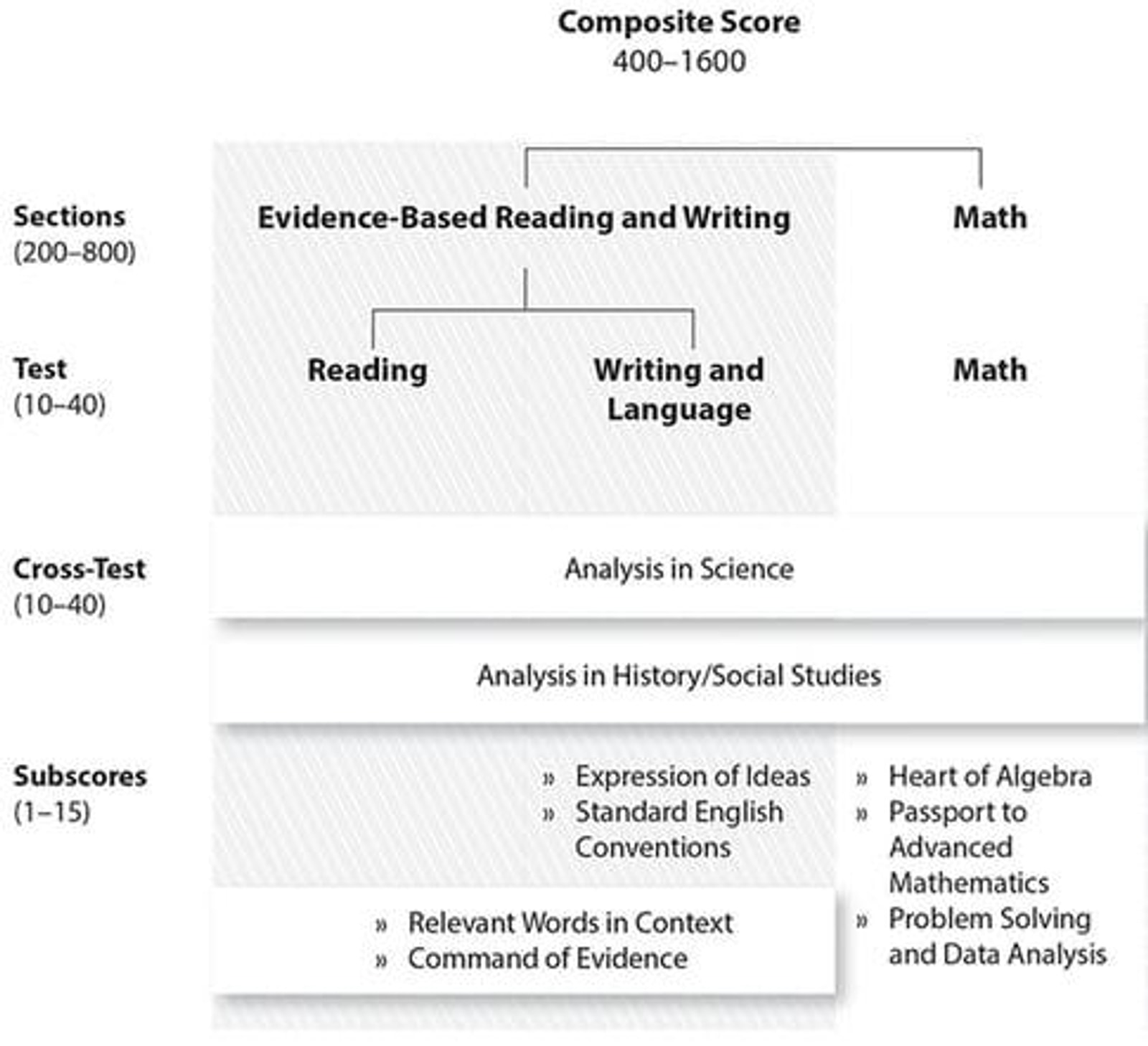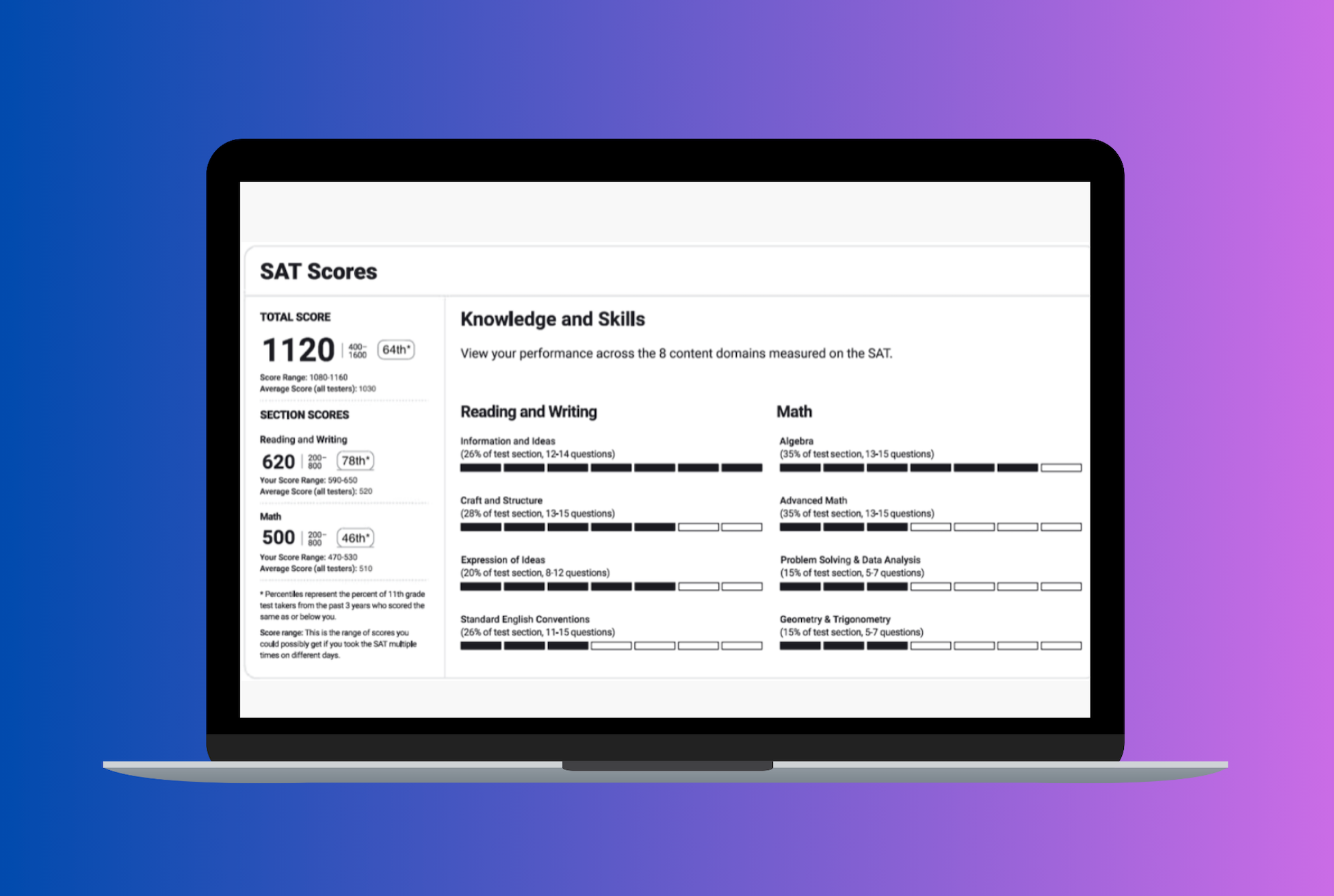Understanding the Scoring System of the New SAT
Author
Hartwell
Date Published

The scoring model for the new SAT marks a significant departure from the scoring system utilized in the previous version of the test. Understanding these changes is crucial for effectively planning your study regimen and test-taking strategies.
In this article, I will outline all the key differences in scoring for the new SAT and explain their implications for you as a student.
Main Scoring Differences
The most significant change in the new SAT scoring structure is the transition to a 1600-point scale, down from the previous 2400-point scale. The Math section retains its value of 800 points, while the Reading and Writing sections are combined into what is known as “Evidence-Based Reading and Writing,” which also accounts for 800 points. It's important to note that the essay is optional and is scored separately from the multiple-choice portions of the test; thus, your essay score does not influence your Evidence-Based Reading and Writing score.
Another notable difference in the scoring methodology is the removal of point deductions for incorrect answers. Previously, the old SAT deducted a quarter of a point for each incorrect response. Now, the SAT functions similarly to the ACT, where incorrect answers are treated the same as unanswered questions—meaning no points are added or subtracted. Additionally, each question now features four answer choices instead of the previous five.
What Does This Mean to You?
With the removal of the guessing penalty, you no longer need to hesitate about whether to answer a question or leave it blank; guessing is always a good option! While this change doesn't necessarily make it easier to achieve a higher score—since the test is curved to account for these modifications, it certainly reduces some of the stress involved in the testing experience.
The shift to a 1600-point scale shouldn't have a significant impact on you unless you are trying to compare your scores from the old SAT (out of 2400) to those on the new version. This could be particularly relevant if you're aiming to determine how much improvement is needed to reach a goal score on the new SAT that corresponds to your previous SAT score. To assist with this, a conversion chart can help translate your current or past scores to their equivalents on the new SAT.
It's also important to note that this latest scoring model places greater emphasis on your Math score. In the old SAT, Math constituted only one-third of your total score, whereas it now accounts for half. Consequently, students who excel in Math may see an increase of approximately 50 points in their overall scores on the new SAT.
For example, if you scored an 800 in Math and a 650 in both Reading and Writing on the old SAT, your composite score would be 2100. If you maintain the same performance on the new SAT—achieving an 800 in Math and a 650 in the Evidence-Based Reading and Writing section, you would earn a score of 1450. This is 50 points higher than the 1400 you would expect if you simply converted your composite score from the old SAT by multiplying it by two-thirds.
Most colleges will accept scores from both the old and new SATs for at least the next few years. The College Board will provide concordance tables to help colleges evaluate and compare scores from the two different tests. Additionally, the Score Choice option remains available, so you won’t have to worry about that changing with the updated test.
New SAT Subscores
The new SAT features a comprehensive scoring structure that extends beyond the primary section scores. It includes separate test scores for Math, Reading, and Writing, each rated on a scale from 10 to 40. Additionally, there are two specialized categories for questions: Analysis in History/Social Science and Analysis in Science. These are also scored on a scale of 10 to 40 and are referred to as “cross-test scores,” as they encompass questions from all three sections of the test.
In total, the SAT provides seven subscores, each ranging from 1 to 15, covering the following categories:
- Command of Evidence (Reading and Writing)
- Words in Context (Reading and Writing)
- Expression of Ideas (Writing)
- Standard English Conventions (Writing)
- Heart of Algebra (Math)
- Problem Solving and Data Analysis (Math)
- Passport to Advanced Math (Math)
Here's a helpful graphic from the Khan Academy website that breaks down the different subscores.

This structure means that each question on the test can fit into multiple subscore categories. For example, consider the following question from the Reading section of one of the new SAT practice tests:
The graph following the passage offers evidence that gift-givers base their predictions of how much a gift will be appreciated on
A) the appreciation level of the gift-recipients.
B) the monetary value of the gift.
C) their own desires for the gifts they purchase.
D) their relationship with the gift-recipients.
This question would naturally fall under the subscore for the Reading test. Additionally, it would contribute to the Analysis in History/Social Sciences cross-test score, as it involves the interpretation of a graph containing data related to a sociological phenomenon, requiring analytical thinking within a social sciences context.
However, it would not be included in the Command of Evidence or Words in Context Reading subscores, as it does not prompt you to provide evidence for your answer to a previous question or assess your understanding of a specific word's meaning in the passage.
What Does This Mean to You?
The introduction of these new subscores provides you with more detailed insights into your strengths and weaknesses on the test. They highlight your specific areas of expertise for colleges and also identify where you can enhance your skills. The College Board has collaborated with Khan Academy to offer a free prep program for the new SAT, which personalizes your study plan based on your subscore distribution, allowing you to concentrate on improving your particular weak areas.
The subscores also indicate the emergence of new question types on the current SAT. Notably, "Command of Evidence" is now a subscore category for Reading questions. This means that questions requiring you to cite evidence for your answers have become a significant part of the Reading section. These questions ask which lines in the passage best support the answer to the preceding question, compelling you to understand the reasoning behind your choices. While this could help reduce careless mistakes on some reading questions, it also introduces a more challenging layer of analysis.
Similarly, the "Words in Context" category underscores the increased emphasis on understanding vocabulary within context in the Reading section. The removal of sentence completion questions has led to a greater focus on context-based vocabulary questions, which prioritize understanding the nuances of commonly used words rather than obscure vocabulary.
The inclusion of "Problem Solving and Data Analysis," along with the two cross-test analytical scores, signifies that you'll encounter questions that require you to interpret data and apply mathematical and logical reasoning to real-world scenarios.
Essay Scores
On the current SAT, the essay is optional, and its format has undergone significant changes. Instead of prompting you to express your opinion on a general topic, the essay now requires you to read a passage and analyze the argument presented within it. According to the College Board, this new essay format resembles a typical college writing assignment where you are tasked with analyzing a text.
The essay is scored on a scale of 2 to 8 across three different dimensions: Reading, Analysis, and Writing. Each essay is evaluated by two graders, with each grader assigning a score between 1 and 4 in each category. These scores are then combined, resulting in a score ranging from 2 to 8 for each dimension. Consequently, the maximum possible score for the essay is 24, while the minimum score is 6.
A rubric is available to clarify how these scores are determined. Essentially, the distinction between an "advanced" essay and a merely "proficient" one lies in the level of understanding demonstrated by the student in relation to the source text. An advanced essay reflects a thorough comprehension of how the details within the text interconnect to support the author's argument. It transcends a basic summary of the author’s points, offering an insightful and focused analysis of the argument instead.

What Does This Mean to You?
The College Board has introduced a new essay format that requires students to demonstrate analytical skills crucial for success in college. In the revised essay, you are asked to explain how the author constructs their argument in the provided passage, supporting your points with relevant evidence and details. This approach to assessing reading and writing skills—focusing on an analysis of another person’s argument—is more effective than simply asking students to write an opinion piece.
Regardless of whether you pursue a humanities discipline in college, it is likely that you will encounter research papers or analyze scientific or historical findings at some point during your studies. The ability to understand and synthesize key points from someone else's argument is essential for meaningful intellectual discourse. The text for the new SAT essay prompt is always sourced from a published work, ensuring that it is high-quality and advanced material akin to what you would encounter in a college setting.
You will now have 50 minutes to complete the essay, an increase from the previous 25 minutes, which may alleviate some of the time pressure you might have felt earlier. Additionally, if you choose to take the SAT without the essay, you can reduce the stress associated with the testing process. However, keep in mind that many selective schools still require applicants to submit their essay scores, so it’s important to check the specific requirements of the institutions you are considering.
Conclusion
The SAT now features an updated scoring model that reflects changes in question types and testing methodologies. The primary distinction between the old scoring format and the current one is the return to a 1600-point scale. You can no longer lose points for incorrect answers, and the number of answer choices per question has been reduced from five to four.
Additionally, the SAT has introduced subscores, which provide a more detailed insight into your strengths and weaknesses on the test, along with personalized support and prep advice through a partnership with Khan Academy.
The essay component is now optional and features a more sophisticated scoring system that evaluates a student's ability to read complex texts effectively, analyze the author's argument, and coherently write about the main points presented.
While there have been significant changes to the SAT format, starting your preparation now will ensure that you are well-equipped to tackle these new challenges with confidence!
Related Posts

Get all the details on the Digital SAT Test—adaptive testing, built-in tools, shorter format, and why it’s more student-friendly than ever!

Learn how the digital SAT score report simplifies performance metrics, offers visual tools, and helps you focus your prep for top scores.